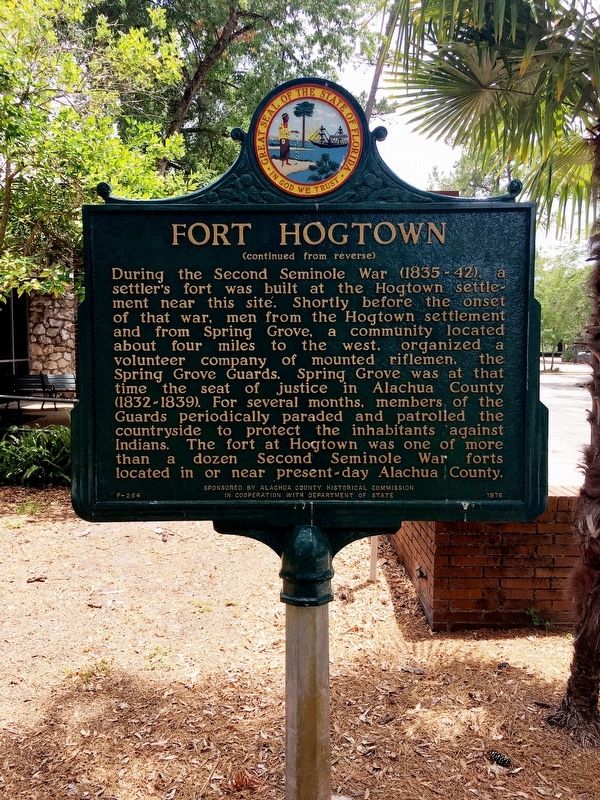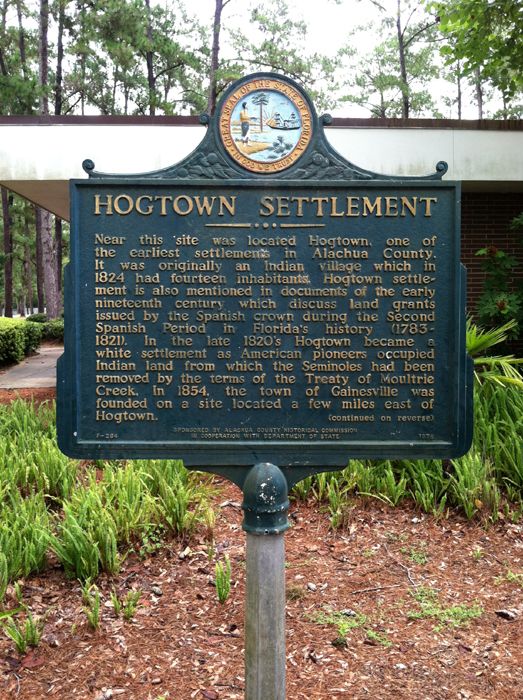
The Ghostly Timbers of Fort Hogtown: A Forgotten Sentinel of Florida’s Frontier
Deep within the emerald embrace of Florida’s sprawling wilderness, where cypress knees rise from murky waters and the air hangs heavy with the scent of pine and decay, lies a secret whispered by the wind through the saw palmetto. It is the story of Fort Hogtown, a forgotten sentinel of a brutal era, whose ghostly timbers once stood defiant against the encroaching frontier. Though its name might conjure images of a rustic, almost comical outpost, its legacy is anything but, representing a stark and often tragic chapter in the making of modern Florida.
For decades, Fort Hogtown existed primarily as a footnote in obscure military records, a faint echo in local folklore, or a tantalizing anomaly on old maps. Its physical remains, swallowed by the relentless subtropical growth, were largely lost to time. Yet, recent archaeological efforts and a renewed interest in Florida’s tumultuous past have begun to peel back the layers of earth and memory, revealing a site of profound historical significance, a testament to human endurance, conflict, and the enduring power of the wild.
A Crucible of Conflict: The Seminole Wars

To understand Fort Hogtown, one must first grasp the crucible of conflict from which it emerged: the Seminole Wars. Spanning from 1817 to 1858, these were not mere skirmishes but a protracted, brutal, and often misunderstood struggle for land and sovereignty. As American expansionism pushed relentlessly southward, it collided head-on with the resilient Seminole people, a diverse confederation of Native Americans and African Americans (many of whom had escaped slavery) who had forged a unique identity in Florida’s vast, untamed landscapes. The U.S. government, driven by the policy of Indian Removal, sought to forcibly relocate the Seminoles to Indian Territory (present-day Oklahoma), a policy vehemently resisted by the indigenous inhabitants.
It was against this backdrop of escalating violence and territorial dispute that a network of military outposts, often crudely constructed and precariously supplied, sprang up across Florida. These forts served multiple purposes: to protect white settlers pushing into the interior, to stage patrols and engage Seminole warriors, and to secure supply lines in a land that was as hostile as it was beautiful. Fort Hogtown was one such outpost, strategically positioned in North Central Florida, not far from the modern-day bustle of Gainesville, a region then considered the very edge of civilization.
Life on the Edge: The Reality of Fort Hogtown
Established around 1837, during the height of the Second Seminole War – arguably the most intense and costly of the conflicts – Fort Hogtown was never intended as a grand fortress. Accounts suggest it was a relatively modest affair: a square stockade of felled pine and cypress logs, perhaps 100 to 150 feet on each side, enclosing a handful of rough-hewn barracks, a mess hall, a powder magazine, and a small hospital. A single blockhouse or watchtower likely stood guard, offering a precarious vantage point over the dense hammocks and pine forests that pressed in from all sides.
Life for the soldiers garrisoned at Fort Hogtown was a grim daily struggle against not only a formidable human enemy but also the unforgiving Florida environment. "These men weren’t just fighting the Seminoles; they were fighting the swamp itself," notes Dr. Evelyn Reed, a historical archaeologist from the University of Florida who has dedicated years to studying the Seminole War era. "Mosquito-borne diseases like malaria and yellow fever were often more lethal than enemy arrows. Supplies were scarce, the heat was oppressive, and the constant threat of ambush created an atmosphere of pervasive dread."
Imagine the scene: dawn breaking over the misty palmetto, the air thick with humidity and the drone of insects. Soldiers, often young and inexperienced, would rise to the sound of reveille, their uniforms perpetually damp, their boots caked in mud. Patrols into the wilderness were fraught with peril, a constant cat-and-mouse game with Seminole warriors who knew every hidden trail, every slough, every whisper of the wind. The Seminoles, masters of guerrilla warfare, rarely engaged in open battle, preferring swift, devastating raids and ambushes that kept the American forces perpetually on edge.
Corporal Thomas O’Malley, a fictionalized but representative figure whose experiences are drawn from numerous historical accounts, wrote in a tattered journal fragment attributed to him: "The forest here has eyes. Every shadow seems to hold a warrior, every rustle of leaves a warning. We sleep with one eye open, and the other dreaming of home. More men fall to the fever than to the rifle, but the fear of the Seminole is a fever all its own." Such sentiments were common among the troops, who often felt isolated and abandoned in the vast, hostile landscape.
Echoes of Conflict: Notable Incidents

While Fort Hogtown may not boast the legendary battles associated with other Seminole War sites like the Dade Massacre or the Battle of Okeechobee, it played its part in the grinding, day-to-day attrition that characterized the conflict. One particularly harrowing account, pieced together from fragmented military reports and local oral histories, describes a surprise Seminole raid on a supply convoy heading to Fort Hogtown in late 1838.
The convoy, a small wagon train guarded by a detachment of infantry, was ambushed near a narrow cypress creek approximately five miles from the fort. The Seminoles, led by a local chief known for his tactical prowess, struck swiftly and decisively. Though the soldiers eventually repelled the attack, sustaining several casualties, the incident highlighted the constant vulnerability of the outposts and the incredible difficulty of maintaining supply lines through the dense, unconquered territory. News of such attacks, often exaggerated in the telling, would spread through the fort, reinforcing the sense of isolation and danger.
Another crucial role of Fort Hogtown was its use as a temporary holding facility for captured Seminoles awaiting transfer to larger internment camps or for those seeking to surrender under truce flags. This brought a different kind of tension to the fort, as soldiers guarded individuals whose families and communities had been devastated by the war, often witnessing firsthand the profound cultural clash and the deep-seated grievances that fueled the conflict. The specter of leaders like Osceola and Micanopy, figures of both fear and respect, loomed large even over these smaller outposts.
The Wilderness Reclaims Its Own
By the early 1840s, as the Third Seminole War wound down and the frontier shifted, Fort Hogtown’s strategic importance waned. The U.S. military began consolidating its forces, abandoning many of the smaller, less critical outposts. Fort Hogtown was likely decommissioned and abandoned sometime between 1841 and 1843. Without a permanent settlement to sustain it, the dense Florida wilderness, ever-hungry, began its slow, relentless reclamation. The log walls rotted, the roofs collapsed, and the earth gradually swallowed the foundations. Within a few decades, little more than faint earthworks and scattered artifacts remained, eventually to be covered by new growth, blending seamlessly back into the landscape.
For over a century and a half, Fort Hogtown remained largely a ghost, its story relegated to the dustier corners of history. Locals might speak of "old fort ruins" or "Indian fighting grounds" in the vicinity of Hogtown Creek, but concrete evidence was elusive. Development surged around Gainesville, pushing ever closer to the historic site, yet the specific location of the fort eluded systematic identification.
Rediscovery and Renewal
It wasn’t until the late 20th century, during a routine survey for a new hiking trail within what is now the Hogtown Creek Greenway, that the first tantalizing clues emerged. "We stumbled upon an unusual earthwork, almost perfectly rectangular. It just didn’t look natural," recalls Mark Jensen, a local park ranger with a passion for history, who was part of the initial discovery team. "Then we found the first square-cut nails, then pottery shards. It was like the land itself was finally ready to give up its secrets."
This initial discovery sparked a renewed archaeological interest. Dr. Reed and her team, collaborating with local historians and community groups, began a meticulous excavation. Ground-penetrating radar revealed the outlines of the stockade walls and internal structures. Shovels unearthed period artifacts: musket balls, uniform buttons, fragments of military-issue pottery, crude tools, and even personal items like clay pipes and bits of glass bottles. Each find was a whisper from the past, helping to piece together the daily lives of the soldiers who once manned this lonely outpost.
"Every fragment unearthed, every corner of the stockade meticulously mapped, helps us reconstruct not just a physical structure, but a chapter of human experience – of fear, courage, desperation, and resilience – that shaped modern Florida," Dr. Reed emphasizes. "It’s a stark reminder that history isn’t just about grand narratives; it’s about the countless individual stories lived and lost in places like Fort Hogtown."
A Legacy Reclaimed
Today, Fort Hogtown remains a site of active archaeological interest, carefully managed to preserve its fragile remains while also making its story accessible. While a full reconstruction may not be feasible or even desirable, efforts are underway to create interpretive trails, historical markers, and virtual exhibits that allow visitors to step back in time. The site serves as an open-air classroom, educating new generations about the complexities of the Seminole Wars, the hardships of frontier life, and the profound impact of these conflicts on both the indigenous peoples and the American settlers.
The story of Fort Hogtown is a powerful reminder that history is rarely simple or one-sided. It is a narrative woven from the threads of courage and fear, expansion and resistance, survival and loss. As visitors walk the quiet trails of the Hogtown Creek Greenway, they are walking on ground that once echoed with the sounds of military drills, the crack of muskets, and the desperate cries of men fighting for their lives and their way of life.
The ghostly timbers of Fort Hogtown may no longer stand tall, but its spirit endures. It is a silent sentinel, a testament to a brutal but pivotal era, urging us to remember the forgotten chapters of our past and to reflect on the enduring legacies of conflict and resilience that continue to shape the Sunshine State. And in the quiet rustle of the palmettos, perhaps, one can still hear the echoes of a forgotten sentinel, whispering tales of a wild, untamed Florida.


